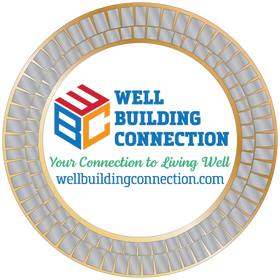The Importance of Working and Living in a Clean Building
Enhancing Health, Productivity, and Well-Being
A clean building is more than an aesthetic preference; it is a fundamental pillar for fostering health, productivity, and overall well-being. Whether it is the home where we unwind or the workplace where we innovate, cleanliness plays an instrumental role in shaping our daily experiences and the quality of our lives.
Health and Hygiene Benefits
The most immediate advantage of a clean environment is its impact on physical health. Buildings that are well-maintained and free from dust, mold, and allergens reduce the risk of respiratory issues and infections. Regular cleaning eliminates bacteria, viruses, and pests, creating a space that is safe and conducive to healthy living.
Moreover, cleanliness promotes mental well-being. Studies have shown that cluttered and dirty environments can lead to increased stress levels and anxiety. In contrast, clean surroundings foster calmness and clarity, allowing individuals to focus better and feel more at ease.
Enhanced Productivity in the Workplace
In the context of work, cleanliness is directly tied to productivity. A clean workspace minimizes distractions, allowing employees to concentrate on their tasks. It also cultivates a sense of pride and professionalism, motivating individuals to perform at their best.
Furthermore, sanitized spaces reduce the frequency of sick days among employees. When offices are cleaned regularly, the spread of contagious illnesses is curtailed, ensuring that the workforce remains healthy and operational. This contributes to a more efficient and resilient organization.
Safety and Accident Prevention
Cleanliness is also a key aspect of safety. A poorly maintained building with cluttered spaces, unclean surfaces, or damaged infrastructure can lead to accidents. Slips, trips, and falls are common in environments that lack proper upkeep, posing risks to both residents and workers. A systematic cleaning routine prevents such hazards and ensures that the building remains a secure place for everyone.
Building Longevity and Sustainability
Maintaining cleanliness is essential for the longevity of the building itself. Dirt, grime, and moisture can damage surfaces, leading to costly repairs and even structural weaknesses over time. Regular cleaning and maintenance preserve the integrity of construction materials, ensuring that the building remains functional and appealing for years.
Clean workplaces and residences also contribute to environmental sustainability. By adopting responsible cleaning practices and using eco-friendly products, buildings can minimize their ecological impact, thereby promoting a healthier planet.
Fostering Positive Relationships
Clean environments are not just about the physical benefits—they also influence interpersonal dynamics. In a clean and tidy space, people are more likely to feel comfortable, respected, and valued. This applies both to homes where families bond and workplaces where colleagues collaborate. Cleanliness sets the tone for positive interactions and helps establish trust and mutual respect.
Promoting Pride and Community Spirit
A clean building reflects care and attention, fostering a sense of pride among its occupants. For businesses, a sparkling office environment enhances the company’s image, leaving a lasting impression on clients and visitors. For residents, a clean living space promotes community spirit, encouraging people to take collective responsibility for their surroundings.
Practical Tips for Maintaining Cleanliness
Maintaining a clean building requires consistent effort and strategic planning. Here are some practical tips:
· Develop cleaning schedules: Regular routines ensure that no area is neglected, keeping spaces pristine and healthy.
· Invest in quality cleaning products: Using effective and eco-friendly materials ensures thorough cleaning without harming the environment.
· Encourage shared responsibility: Promote a culture where all occupants contribute to maintaining cleanliness.
· Leverage professional services: For large buildings, hiring professional cleaning services ensures a higher standard of hygiene and efficiency.
· Monitor air quality: Use air purifiers and regular ventilation to keep indoor environments fresh and free from contaminants.
Conclusion
Working and living in a clean building is not merely a convenience—it is essential for physical health, mental well-being, and overall quality of life. Cleanliness enhances productivity, fosters safety, and improves interpersonal dynamics, while also contributing to the durability and sustainability of the building itself. By prioritizing cleanliness, we not only create healthier spaces but also nurture happier and more cohesive communities.

